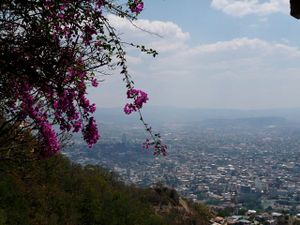Group N - Collaborative Climate Adaption Project: Difference between revisions
No edit summary |
|||
| Line 44: | Line 44: | ||
=== Landscape and/or urban context=== | === Landscape and/or urban context=== | ||
* | *Helsinki – the capital of Finland - is situated at the mouth of the river Vantaa, in southern Finland, on the shore of the Gulf of Finland, an arm of the Baltic Sea. The city is spread across a number of bays an peninsulas and over about 315 islands. The total area of the city is 716 sq.km, where the sea occupies a 503 sq. km large surface and the land only 213 sq.km. Helsinki has also a 123 long shoreline (only from the mainland). The population of the city proper of Helsinki is 602,200, making it by far the most populous city in Finland. Therefore it has a density of 2,800 inhabitants per sq.km, which is relatively low in comparison with other european capitals (eg London: 5,206/sq.km; Stockholm: 4,600/sq.km; Brussels: 7,025/sq.km). Another important statistical fact to mention would be that approximately one of four Finns, live in the metropolitan area of Helsinki making the whole metropolitan an important centre of population, jobs, public and private investment, infrastructure construction, administration and research. | ||
The public transport system is very spread and consists of trams, commuter rail, the subway, bus lines and two ferry lines. There were only 240,175 cars registered in Helsinki, which means about 403 cars per 1000 inhabitants. | |||
The symbol animal of the city is the squirrel (Sciurus vulgaris) and its symbol plant the maple (Acer platanoides). | |||
* | |||
Illustration: | Illustration: | ||
Map; sketches; short descriptive analyses | Map; sketches; short descriptive analyses | ||
Revision as of 18:59, 10 December 2012
| Area | please enter the area name here | |
| Place | please enter the town/village name | |
| Country | please enter the country here | |
| Topic | please enter the topic here | |
| Author(s) | Please enter your name(s) | |

| ||
Error in widget GoogleMaps: unable to write file /var/www/wikienfk5/extensions/Widgets/compiled_templates/wrt67edba78cbff63_32932650
| ||
Rationale: Why have you selected this case study area?
HELSINKI
- Please summarise:- e.g. previous experience, is it your everyday environment?, specific vulnerability, previous research being done etc.
Authors' perspectives
- What theoretical or professional perspective do you bring to the case study?
Landscape and/or urban context
- Helsinki – the capital of Finland - is situated at the mouth of the river Vantaa, in southern Finland, on the shore of the Gulf of Finland, an arm of the Baltic Sea. The city is spread across a number of bays an peninsulas and over about 315 islands. The total area of the city is 716 sq.km, where the sea occupies a 503 sq. km large surface and the land only 213 sq.km. Helsinki has also a 123 long shoreline (only from the mainland). The population of the city proper of Helsinki is 602,200, making it by far the most populous city in Finland. Therefore it has a density of 2,800 inhabitants per sq.km, which is relatively low in comparison with other european capitals (eg London: 5,206/sq.km; Stockholm: 4,600/sq.km; Brussels: 7,025/sq.km). Another important statistical fact to mention would be that approximately one of four Finns, live in the metropolitan area of Helsinki making the whole metropolitan an important centre of population, jobs, public and private investment, infrastructure construction, administration and research.
The public transport system is very spread and consists of trams, commuter rail, the subway, bus lines and two ferry lines. There were only 240,175 cars registered in Helsinki, which means about 403 cars per 1000 inhabitants. The symbol animal of the city is the squirrel (Sciurus vulgaris) and its symbol plant the maple (Acer platanoides).
Illustration: Map; sketches; short descriptive analyses
Cultural/social/political context
- Brief explanation of culture, political economy, legal framework
Illustration: Bullet points, image, background notes
Local Climate
- What are the climatic conditions at present? Have there been extreme weather events in the near past?
- Which changes are expected? Is there any evidence?
Illustration: Table or time line
Analysis of vulnerability
- If you consider these potential changes - which aspects/functions of your case study would be affected?
Illustration: Map/diagram/sketches/photos/background notes
Proposals for Climate Change Adaption
- How could your case study area become more resilient to climate change?
- Which measures would need to be taken to adapt to the new situation?
- How could you assure sustainability of these measures?
- Please describe 2-3 measures
Proposals for Climate Change Mitigation
- Which measures would need to be taken to reduce greenhouse gas emissions and other drivers of climate change within your case study area?
- How could you assure sustainability of these measures?
- Please describe 2-3 measures
Your scenario
- How will this area look like in 2060?
- Please forecast one potential future development taking climate change into account
Illustration: Map/diagram/sketches photos and background notes
What can be generalized from this case study?
- Are there any important theoretical insights?
- Which research questions does it generate?
- Short statement plus background notes
Image Gallery
- Yourimage.jpg
your image text
- Yourimage.jpg
your image text
- Yourimage.jpg
your image text
- Yourimage.jpg
your image text
- Yourimage.jpg
your image text
- Yourimage.jpg
your image text
- Yourimage.jpg
your image text
- Yourimage.jpg
your image text
References
Please add literature, documentations and weblinks
About categories: You can add more categories with this tag: "", add your categories